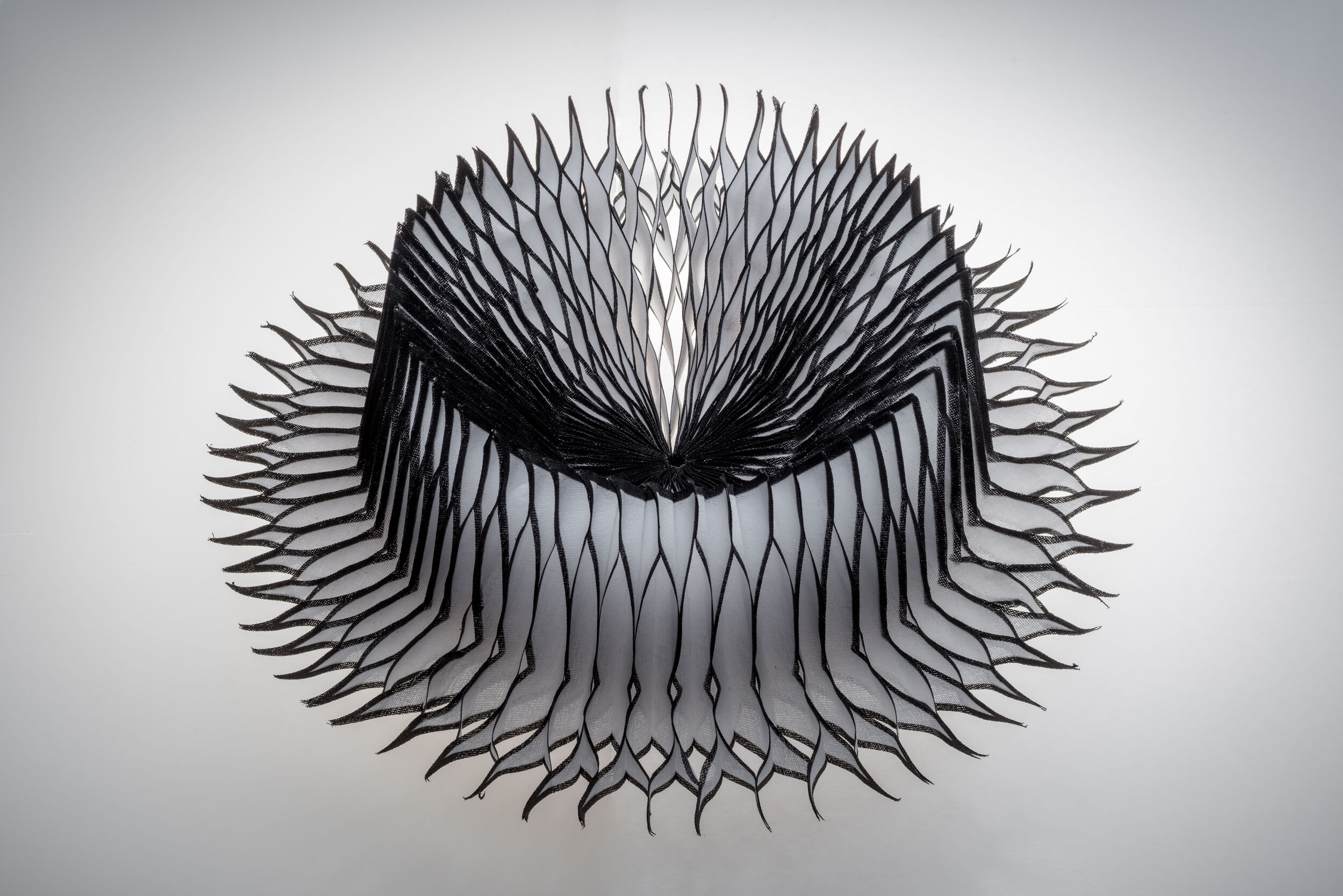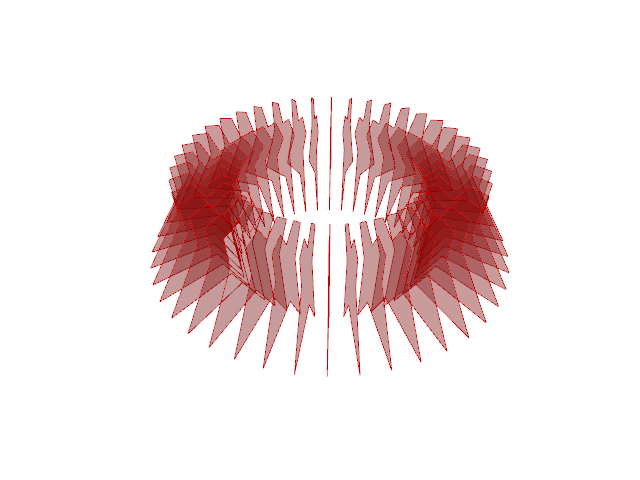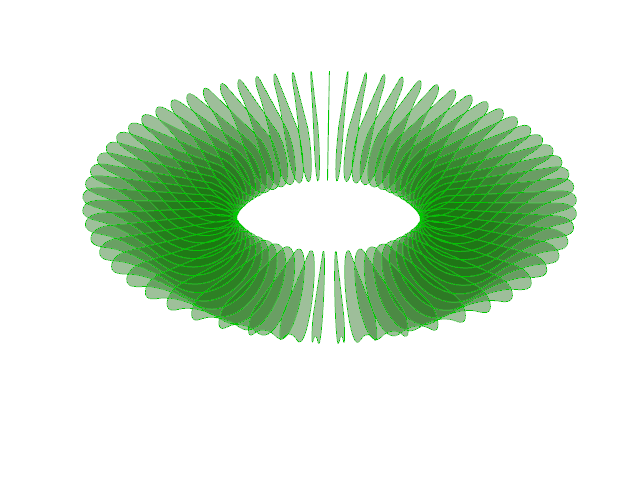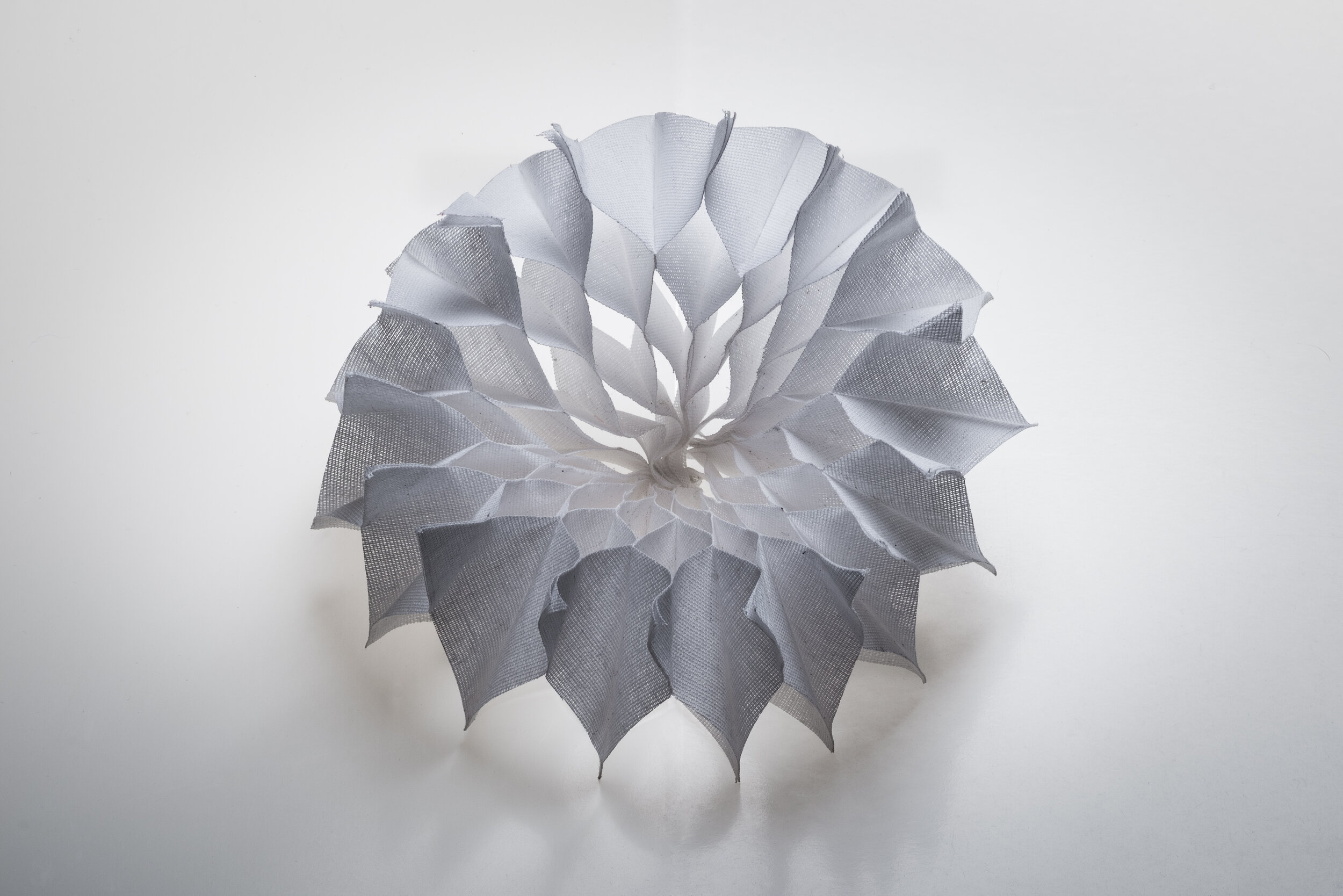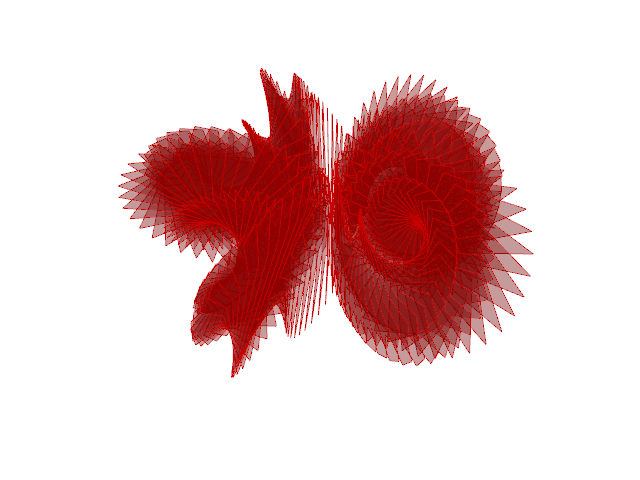Netherlands born, Baltimore based artist Annet Couwenberg utilizes the inherent geometry and “biology” of origami to explore, observe, and record the myriad possibilities inherent in these intricate sculptures. Through endless reconfiguration, Couwenberg’s work highlights that “every connection between a structure and its different layers tells a story, unseals poetic understandings of natural and social phenomena and opens up thinking and working in new realms.”
Couwenberg received a MFA from Cranbrook Aacademy of Art, and another one from Syracuse University. Recipient of multiple grants, awards, and fellowships, including a Smithsonian Artist and Research Fellowship in 2014. Couwenberg has exhibited nationally and internationally and has work in the permanent collections of the Baltimore Museum of Art and the Nederlands Textielmuseum, Tilburg, amongst numerous others. She is a professor at Maryland Institute College of Art (MICA) in the Fiber department.
For more information, please see: www.annetcouwenberg.com and on Instagram @annetcouwenberg.
Annet Couwenberg, “Shapeshifter”, Star pattern, 2020. Origami of 120 star patterns out of buckram with black paint. 5,5” x 12” x 12”. Photo: Dan Meyers.
First, and most importantly, how are you doing? How are you navigating the highs and lows?
“How do we move forward?” has become a considerable issue faced by all. The world is coming apart at the seams and we all have to reposition ourselves and start mending, appreciating our boundaries, and precariousness of the planet we occupy, from the social to the natural to the technological world. Repositioning ourselves, for me, means thinking deeply about the term 'mending’, patiently re-stitching, repairing our relational fabric, mending what is broken, and thinking about our own and nature’s ephemeral position. To change our modes of thinking with the necessary transformation of a new economy, a just society, healing the deep social fractures and institutional racism, we have to activate a community of creative change makers. As a craftsperson thinking about our wellbeing, I am reflecting a lot on the unity of “Making & Being”. Appreciating craft as a human-material interaction, seeing the role of craft as a way to share local, personal heritage and traditions, what better way of distributing our own diversity, our own identity. Craft is about community and gives me hope. During this critical time of change, in my diverse roles as educator and active board member of different organizations in the larger community, locally and nationally, I am honored and grateful to have time to focus on topics of community and social solidarity and move forward towards real change in society.
Annet Couwenberg, “Shapeshifter”, Star pattern, 2020. Origami of 120 star patterns out of buckram fabric with black paint. 7,5” x 10,5” x 10,5”. Photo: Dan Meyers.
It's my experience that most artists engage with some level of self-isolation in their day to day art practice. Has this been your experience? And if so, have you found these innate rhythms to be helpful during this larger, world-wide experience of isolation?
Although self-isolation has always been a part of my artistic practice, I truly miss the physical access, closeness to people, the working together, the support and all the informal discussions. The “DIT” (doing it together)” solidarity in MICA’s digital fabrication lab , especially with the students, provides me with a place and time to participate in an active learning environment. I am genuinely missing working in a common space where learning among students, faculty and technicians from different disciplines and diverse backgrounds, is fluid and fertile. A space where the conversation about art, craft and emerging technologies, its impact on society, and culture is intense and always lively. The interdependence and interdisciplinarity of the digital fabrication lab amplify our shared knowledge acquisition and due to my inimitable curiosity, it empowers me to create in new realms.
Annet Couwenberg, “Shapeshifter”, Star pattern, 2020. Origami of 120 star patterns out of buckram fabric with black paint. 7” x 14” x 14”. Photo: Dan Meyers.
It would be great if you could briefly talk us through your practice. Understanding it is integral to appreciating the multivalence of your work.
Working at the intersection of traditional craft and digital technology has fueled in me the unrelenting desire to re-imagine the relationship between “research through making and making through research” as a generative dialectic to both preserve (tradition and history) and invent (new realms). My work deals with the following questions: What occurs when information is translated from one source to another, from the digital/virtual to the hand? Does it shift and migrate the meaning, does the data become more malleable, pliable? How can I couple the digital with the physical and what would my experiments yield? By pairing weaving with digital algorithms, origami with parametric laser cutting and handwork, folding with cybernetic systems of control, I am orchestrating the digitally and the physical at the same time.
The digital, as a tool, is ensconced in the computer, while the physical form remains isolated and free-standing. I am researching on how to integrate these two modes by exploring the interactivity that connects them. By creating origami forms by hand and translate in a digital form by simulating the natural movement to help me understand my options and the beauty of nature.
Annet Couwenberg, Star Pattern, 2020. Digitally created in Grasshopper. Courtesy of the artist.
Has any of your imagery shifted in a reflection to what's currently happening? Or are you considering using coronavirus related imagery for future projects? Do you find it necessary to make work about the pandemic? And why, or why not?
My imagery hasn’t shifted but I am starting to question if a space of uncertainty, insecurity, and improbability can make way for more critical perspectives, other practical imaginings? The loss of the sense of touch and non-physical ‘togetherness’ while we're all social distancing can assist me in negotiating the terrain between the immateriality of the digital and the physicality of form.
Annet Couwenberg, “Shapeshifter”, Star pattern. Origami with 54 star patterns out of buckram fabric. 6,5” x 12,5” x 12,5”. Photo: Dan Meyers.
Are you thinking differently? Coping differently? Inspired differently?
During this time, I have been thinking more deeply about how we bring in practice the notion of reciprocal collaboration between the human (body) and non-human (computer, the digital). How can I make the audience aware of ‘living organisms’, observe their beauty, having a physical conversation between the body and object to change the evolution of movement and experience anew? With my newest prototypes/studies I am deepening my knowledge about the nature of dynamic, responsive origami sculptures and computer mediation, simulation of movement. Experimentation with numerous ways of folding, even thinking about sensing and actuation, engineering, developing software that can accumulate into interactive sculptures, “living organisms”. My next step is to create origami prototypes using embedded sensors, actuators and digital programming to be able to have the audience, like “digital puppeteers”, transform the sculptures into various shapes upon interactivity (physically or digitally), to challenge and find new meanings.
Annet Couwenberg, “Shapeshifter”, Star pattern. Origami with 54 star patterns out of buckram fabric. 5, 5” x 12,5” x 12,5”. Photo: Dan Meyers.
What do you think or hope will be different after this crisis has passed?
Hopefully this space of uncertainty and insecurity will make way for critical perspectives and very needed mending. Right now, we are occupying a space, where time becomes a series of fragmented non-linear intermissions, back and forth and interactions with each other in unfamiliar and unintuitive ways. Observing all of these disjointed hiatuses as a fertile space will assist us to recalibrate, reengineer, reimagine and refabricate. I am convinced that all these critical approaches empower creativity, and will encourage artistic practice and collaboration. And to borrow from the textile field, I believe our ability to ‘mend’ is here. Mending, repairing, means adaptation, and adaptation means changing what is there, you can’t change what is there if you don’t listen, so deep listening to each other, our environment and the world will be our next step.
Annet Couwenberg, Drop Pattern, 2020. Digitally created in Grasshopper. Courtesy of the artist.
What is bringing you solace, or even joy, in this moment?
It has been an incredible honor and joy to watch the resilience, creativity, and thoughtfulness of the MICA Fiber Seniors. During this time of uncertainty, insecurity, and improbability they forged a pathway for critical perspectives, produced powerful work and giving me hope for the future. We as artists have a role to play in shaping the future, creating a new narrative, visualizethis new and changing the world with a critical eye and the class of 2020 has shown me it is possible.
In addition, I have found solace in staying in touch through FaceTime, Zoom, Skype, WhatsApp, Messager, TinyBeans (all those digital tools/Apps!) and yes, the ‘old fashion’ phone, with family and friends in the US, Italy, Portugal and the Netherlands. Oh, I can’t forget how much I enjoyed all the cooking and baking for my husband, Dan, and myself, thanks to the delicious recipes in the NYT and Ottolenghi, with the lovely bonus of sharing recipes with my daughter, Mara and her partner, B.
Annet Couwenberg, “Shapeshifter”, Drop pattern. Origami with 28 drop patterns out of buckram fabric. 5, 5” x 6,5” x 6,5”. Photo: Dan Meyers.
Are you reading anything?
At this moment I am reading Touch, The Science of Hand, Heart and Mind by David J. Linden. In this book, Linden talks about interpersonal touch as crucial to social bonding and individual development. He explains how sensory and emotional context work together to distinguish between perceptions connecting biology and behavioral science. How the interface between our sense of touch and our emotional response affect our social interactions, our sense of self and our experience of the world, as well as ‘making’ and use of our tools? Tactical information and the omnipresence of the sense of touch, the emotional ‘touch blindness’ in the virtual world we are living in during this time of social distancing is something I am fascinated by.
In addition, my daughter and I are reading My Grandmothers Hands: Racialized Trauma and the Pathway to Mending Our Hearts and Bodies by Resmaa Menakem. Making progress and beginning to address inequities and hatred, this intergenerational discussion is paramount, confronting white privilege and trying to start understanding trauma passed down through generations,
Annet Couwenberg, “Shapeshifter”, Drop pattern. Origami with 28 drop patterns out of buckram fabric. 5, 5” x 6,5” x 6,5”. Photo: Dan Meyers.
What research or writing are you doing that you find compelling?
For my origami research I am looking at and collecting resources: Origami and its Application in Mechanical Engineering; Movement of the Fold: Kinetic Origami Sculptures; Engineering with Origami; 3D modeling in Grasshopper
Annet Couwenberg, Star Spinning Pattern, 2020. Digitally created in Grasshopper. Courtesy of the artist.



